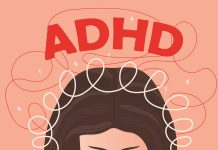Student wellbeing drops sharply after starting secondary school with most adolescents satisfied at 11 and most extremely dissatisfied by 14
According to new research published in the British Journal of Developmental Psychology, student wellbeing experiences a sharp decline when students begin secondary school, regardless of background or experiences.
Academics from the Universities of Manchester and Cambridge analysed student wellbeing and self-esteem of more than 11,000 young people from across the UK, using data collected when they were 11 and again when they were 14.
It may sound shocking that at 11, most adolescents were satisfied with life, but only three years later, at 14, the majority were extremely dissatisfied by age 14. By that age, the ‘subjective wellbeing’ scores of 79% of participants fell below what had been the average score for the entire group three years earlier.
The study also recorded information regarding adolescents’ satisfaction with specific aspects of their lives, such as:
- Schoolwork
- Personal appearance
- Family and friends
The most dramatic downturns between 11 and 14 were probably related to school and peer relationships.

Family life and economics influence student wellbeing
Circumstances such as family life and economics are widely accepted to influence young people’s mental health. The research shows that notwithstanding this, wellbeing tends to fall steeply and across the board during early adolescence.
Scientists believe the decline is probably linked to the transition to secondary school at age 11. The study identified that the aspects of wellbeing which changed in early adolescence were typically related to school and peer relationships, suggesting a close connection with shifts in these young people’s academic and social lives.
In addition, students with higher self-esteem at age 11 experienced a less significant drop in wellbeing at age 14, which indicates that structured efforts to strengthen adolescents’ self-esteem – particularly during the first years of secondary school – could mitigate the likely downturn in wellbeing and life satisfaction.
How can schools support student wellbeing?
The researchers have identifed various ways in which schools can support student wellbeing, including:
- Celebrating students’ achievements
- Reinforcing the value of things they had done well
- Avoiding comparing to other students
Adolescents’ wellbeing is in decline. The Children’s Society has shown that, in the UK, 12% of young people aged 10 to 17 have poor wellbeing.
We urgently need to do more to support students’ wellbeing at secondary school
“Until now, we haven’t fully understood how universally poor wellbeing is experienced,” said Dr Jose Marquez from The University of Manchester. “The relationship between wellbeing and self-esteem has also been unclear.”
“Even though this was a large, diverse group of adolescents, we saw a consistent fall in wellbeing,” said Ioannis Katsantonis from the University of Cambridge.
“One of the most striking aspects was the clear association with changes at school. It suggests we urgently need to do more to support students’ wellbeing at secondary schools across the UK.”










